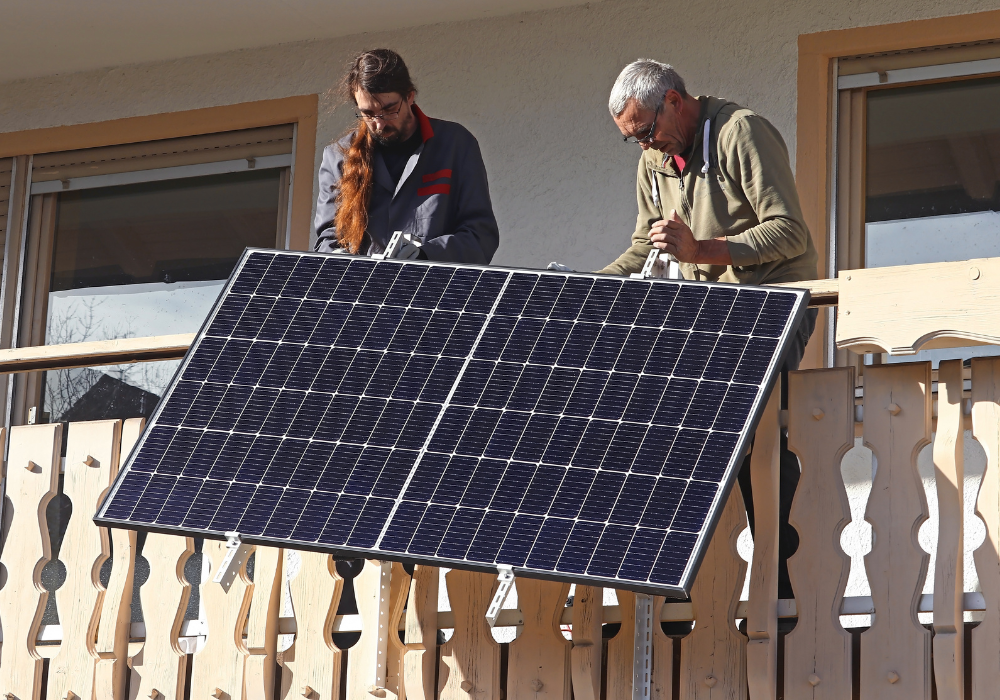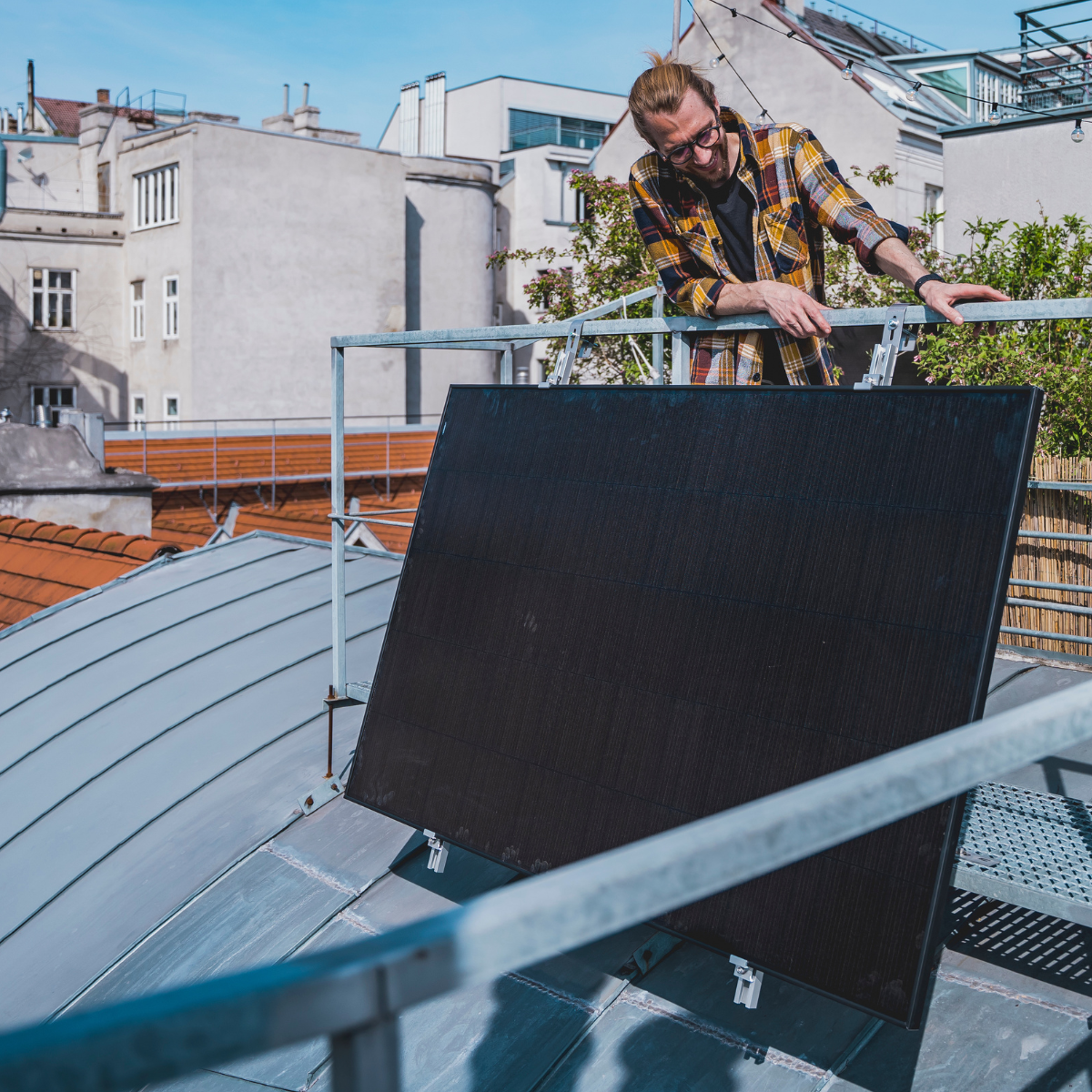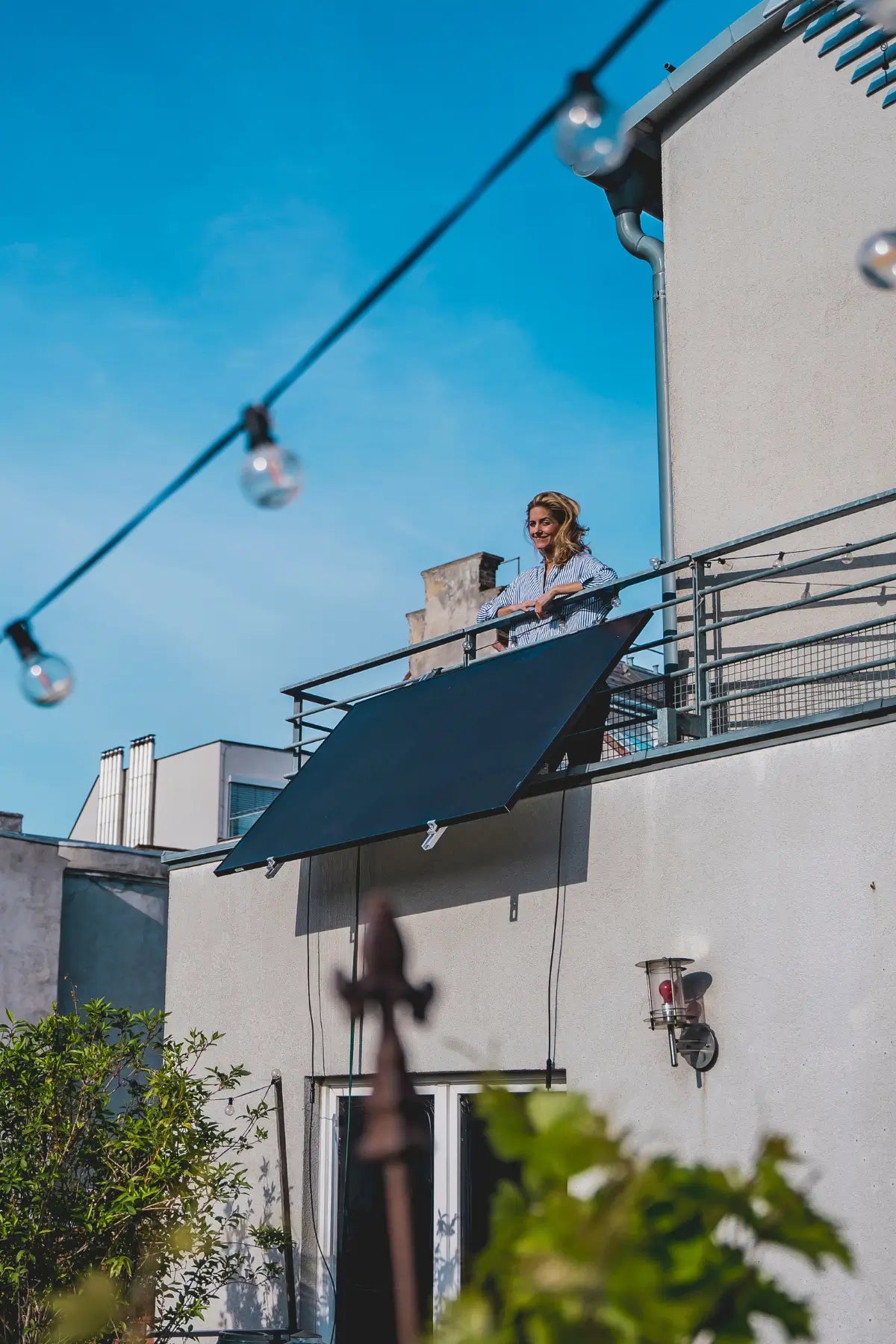Balcony power plants, also known as plug-in solar systems, are currently in high demand. And there's a good reason for this: these small power plants can be conveniently installed on your balcony and generate electricity for your direct consumption. Why is this attracting increasing interest? Firstly, a balcony power plant can sustainably reduce your electricity costs, and secondly, you're less affected by electricity price fluctuations. If you're hesitant about the technical or legal requirements for setting up and operating balcony power plants, we can reassure you: these are minimal. And this applies not only to homeowners but also to renters.
Construction of a balcony power plant
Balcony power plants typically operate at a voltage of 230 volts, which is standard in German households. The smallest version of a balcony power plant consists of only a few components.
- solar module
- Inverter
- connecting cable
- Feed-in socket
As soon as these three elements are connected and sunlight hits the solar module, your power plant generates electricity. The inverter converts the direct current into alternating current. The power output naturally depends heavily on the orientation of your balcony. As a homeowner, you have the option of mounting the small power plant on a facade or a canopy in addition to a balcony. If your balcony is in the shade all day, you should reconsider purchasing one. Ideally, the modules should face south without any shading and be tilted at a 30°-40° angle. To connect the inverter to the power grid, you should use a permanently installed wall socket, not a distribution socket. Wieland feed-in sockets or Schuko plugs are suitable. The feed-in socket must always be protected by a circuit breaker.
How do I size my balcony power plant?
Legal requirements state that the maximum output of a balcony power plant may not exceed 600 watts. If you want to operate a more powerful power plant, you will need to obtain a permit. However, this 600 watts refers to the output of the modules under optimal conditions. As mentioned above, this means a south-facing orientation without shade and an inclination of 30°-40°. Furthermore, this means that your balcony power plant may well be capable of producing more electricity than 600 watts, as optimal conditions are only rarely met. Otherwise, there are also inverters limited to 600 watts, so you don't have to worry about exceeding a legal limit in this regard.
The low legal requirements make balcony power plants very attractive
Balcony power plants are considered plug-in systems. This means that the solar module is directly connected to the inverter, from which a cable with a plug leads out. They are therefore mini photovoltaic systems that can be quickly and easily connected to a power outlet. The generated energy can then be fed directly into your own electrical circuit. Unlike photovoltaic systems, plug-in systems do not require any approval procedures. However, this does not mean that you do not have to register your balcony power plant with your responsible grid operator. This is also mandatory for a plug-in system. But don't worry, registration is very straightforward and is done via a form that you can obtain upon request. In addition to the registration, registration in the trademark register of the Federal Network Agency is required. This is free of charge and should be completed no later than one month after initial use. Due to their compact design, balcony power plants are generally considered privacy screens. Therefore, unless your landlord has specified regulations regarding the attachment of objects to the balcony in the rental agreement and the installation is not intended to take place outside the balcony, your landlord's consent is usually not required. This can vary from case to case, so it's best to double-check. Remember: As long as your system doesn't exceed the 600W limit, there are no further formal requirements. And you don't need to be an electrician to install your balcony power station; even a layperson can easily do the installation.

Is a balcony power plant worth it for me?
Do you have permanent consumers connected to the grid that require energy during the day? Then a balcony power plant can quickly pay for itself. If you need electricity at the time of energy generation (e.g., for any home office devices), a balcony power plant will provide you with reliable power. Keep in mind that the electricity cannot be stored for later use; it is intended for immediate consumption. Do you have any further questions about the balcony power plant or are you unsure whether a purchase is worthwhile for you? We would be happy to advise you over the phone. Alternatively, you can also send us an email.









